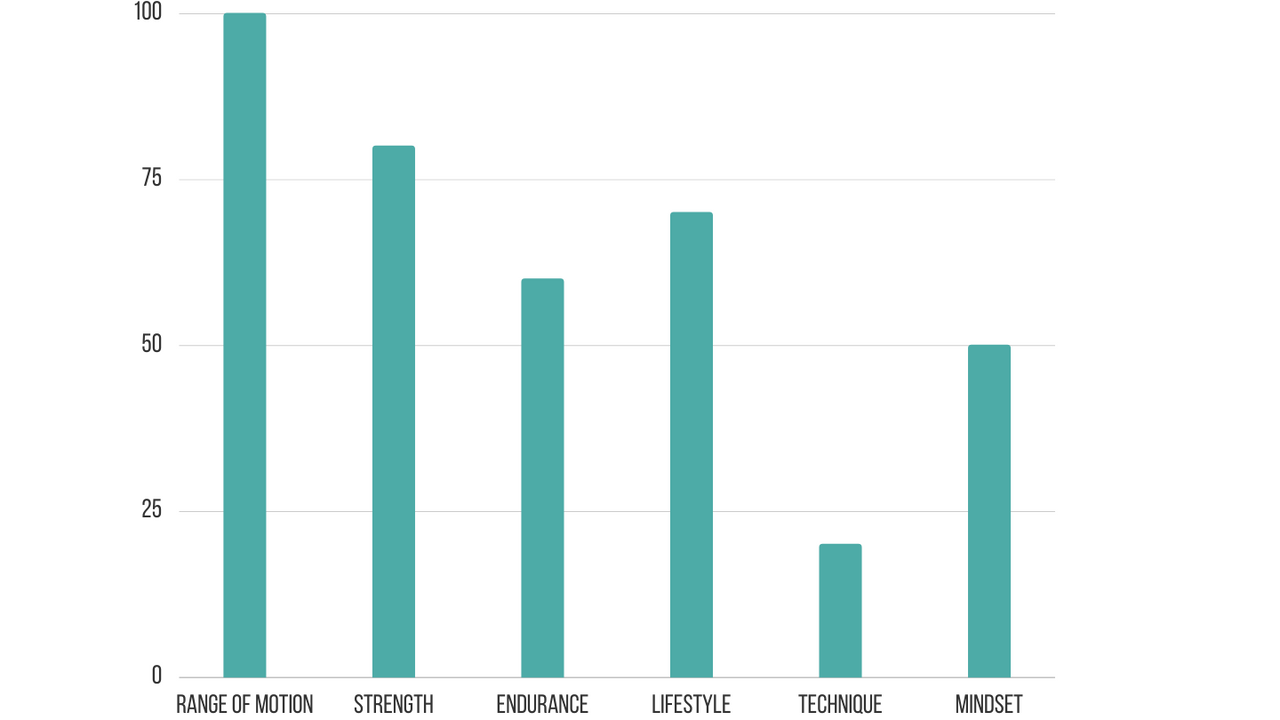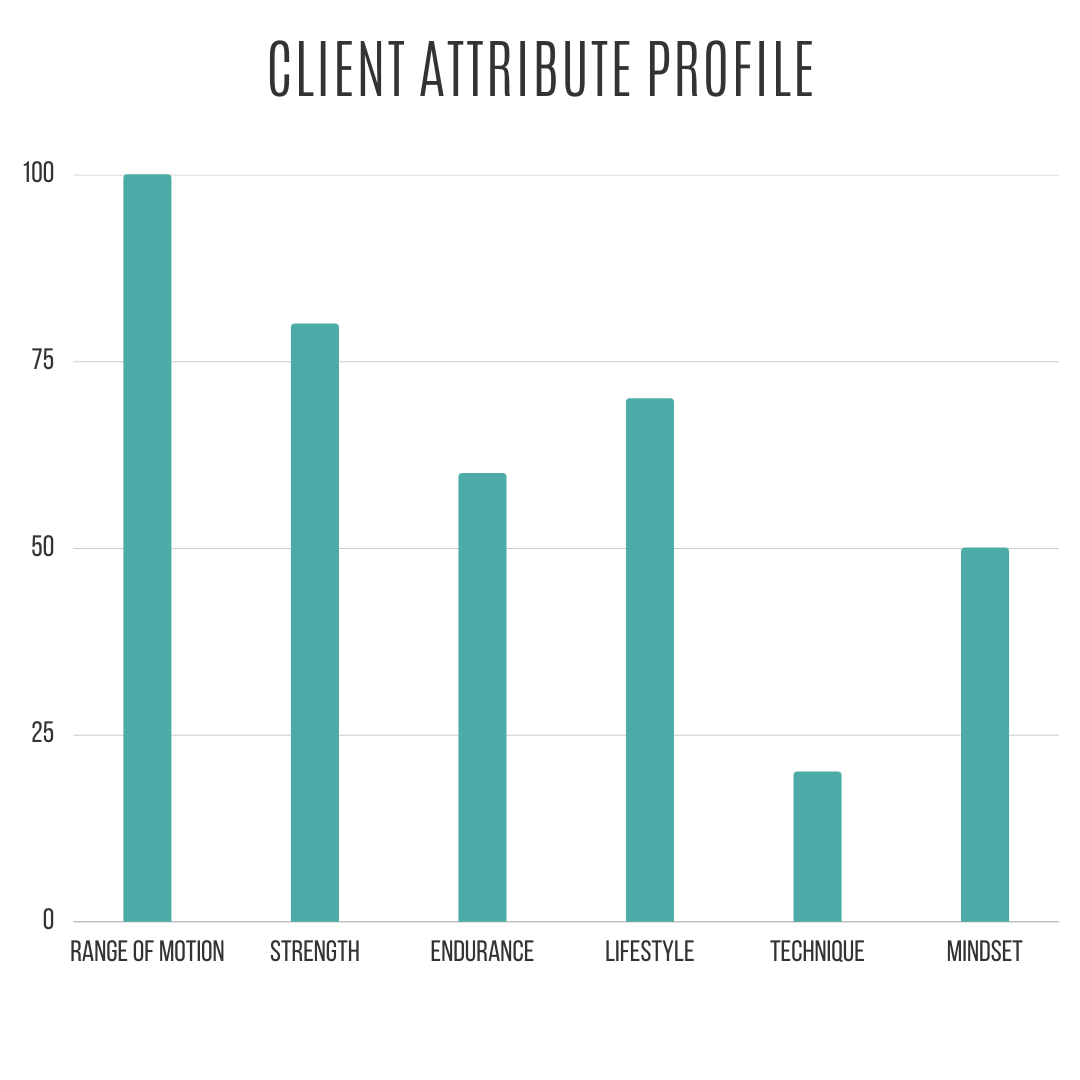Client Programming in 6 Steps
Jan 17, 2022
“I just don’t know where to start”.
A phrase you’ve either used or heard before. Well look no further, we’ve got you covered!
The thought of program creation can be overwhelming and even inflict the typical case of “paralysis by overanalysis”. After this blog, you’ll basically be a pro.
To understand the journey of our client, we must first understand the destination. What’s step 1 of a road trip? Insert the destination in google maps. Boom. Problem solved. So let’s extrapolate that process out to our clients:
Step 1 - The destination or as we will call it your GOALS.
We can look at goals on three levels.
Level 1: What your client NEEDS to do. This might be… “I need to be able to pick my kids up” is what they said… But what I heard was: I need the range of motion required to pick up kids, I need the strength required to pick up kids, I need tolerance to move in and out of awkward positions, I need carry capacity. My brain is already forming a plan…
Level 2: What your client WANTS to do. “I want to go to my gym and not modify every workout with deadlifts”. What I heard: deadlifting is a trigger and needs to be regressed and then slowly reintroduced.
Level 3: What your client DREAMS about doing. “I would love to run the local 5k with my family”. What I heard: Needs plyometric capacity, single leg stability/strength, a return to running progression.
A plan is forming and I haven’t even done any assessments all based on a goals conversation!
Step 2 - Given the Goals, create their unique ASSESSMENT!
What does your assessment process look like? If you don’t have one, respond to this email and we can chat… but for now, here’s mine: Range of motion, creating a pertinent strength profile for the client, endurance, technique, lifestyle factors, and mindset.
Range of motion - What’s missing that could be contributing to their problem?
Strength - Is there a discrepancy or bias that’s contributing to their problem?
Endurance - Do they have the capacity to perform the workload prescribed at the given intensities?
Technique - Have they practiced and learned the skills to perform the demands of the pattern to an acceptable standard?
Lifestyle - What’s their stress profile, training profile, fuel habits, and sleep habits?
Mindset - How do they view their behaviors and the environment which surrounds them?
Every interaction can act as an update to these things. For each client some might hold more or less weight than others, and that's ok!

Step 3 - Given the Assessment, interpret the RESULTS!
Very simply, what stands out to you? You’re probably onto something so no need to second guess yourself, you can always adapt! From the assessment, outline the top 3 limiting factors that you will be working on. Let’s say for example it’s: Limited range of motion, a deadlift that looks like a squat, and poor sleep/recovery! This becomes the CORE of your program!
Step 4 - Give the CORE RESULTS, what else supports the OUTCOME!
Now the fun part… We are creating the programming outline. We know day 1 is going to be the core or our HINGE day. But what about single leg strength? OK, so we want a UNILATERAL hinge day… That becomes day 2. Did you also find limited step ups? Great, that’s day 3! So let’s organize them in a way that flows well for the client. I have 2 hinge days, and a squat dominant day. I am going to use the squat day to break up the hinge volume…. That’ll flow nicely!
My programming skeleton now looks like this:
|
Day 1 |
Day 2 |
Day 3 |
|
|
Warm - Up |
Posterior chain range of motion drills + Priming |
Anti-rotation drills, rotation drills and squat priming |
Posterior chain range of motion drills + Priming |
|
Main work |
Bilateral Hinge |
Unilateral Squat |
Unilateral Hinge |
|
Accessory |
Core stiffness/bracing |
Carry capacity |
Anti-rotational work |
Step 5 - Gauge initial DOSE RESPONSE!
Did you get it right? Yes. Awesome! No? No worries, EVERYONE misses.
All you need to do is make the changes based on your client’s feedback! That’s the beauty of the initial programming process, it’s still an assessment tool, just at a greater timeframe!
Step 6 - Repeat and add new phases of programming as your client progresses!
I promise, you’re better equipped for this than you think. You just have to be willing to be wrong from time to time. The best coaches and rehab pros in the work miss all the time, we aren’t perfect!
I hope this breakdown gives some insight to how I systemize my programming process! If you’d like to learn more, just reply to this email or head here!
______
If you found this article helpful, the best compliment you can give is to share this with your colleagues. It’s greatly appreciated!
Interested in learning more?

